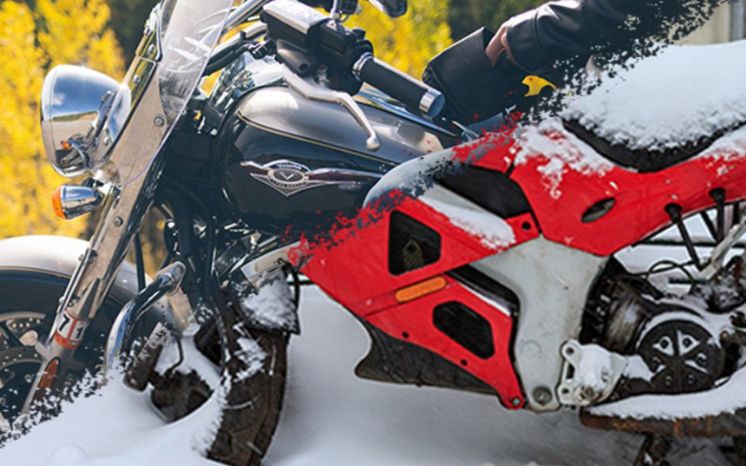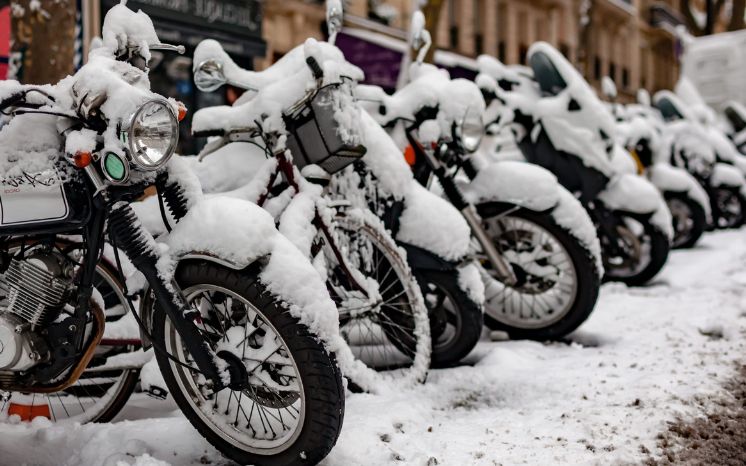Winterizing your motorcycle is essential for maintaining its consistent performance and increasing its lifespan. It can be an intimidating task, especially if you’re unsure how to winterize a motorcycle.
But fear not! We’re here to guide you through the process step by step. This comprehensive guide will provide you with everything you need to know about winterizing your motorcycle, from prepping the motorcycle for prolonged storage to preventive maintenance tasks.
Remember, winterization is not about simply storing your motorcycle away until the temperatures rise. It’s about preserving its mechanics and aesthetics. So stay tuned and learn all about how to winterize your motorcycle effectively.
How To Winterize Motorcycle
Before the chill of winter settles in, give your motorcycle the care it deserves. By following the steps outlined in this guide, you will not only protect your investment but also ensure an effortlessly smooth ride when the warmer weather returns. Let’s dive in and explore the process of winterizing your motorcycle.
Preparing Your Motorcycle for Winter Storage
The very first step towards winterizing your motorcycle is prepping it for prolonged storage. This includes a thorough cleaning and inspection of all its parts.
Start by giving your motorcycle a good wash with soap and water, making sure to remove any dirt or debris that may have accumulated during regular use. Once clean, dry it off completely using a soft cloth or chamois.
Next, inspect all electrical components, including the battery, spark plugs, and wires. Take note of any signs of wear and tear or corrosion and address them accordingly. It’s also a good idea to disconnect the battery and store it separately in a cool, dry place.
Moving on to the fuel system, drain the gas tank completely and add a fuel stabilizer to prevent the fuel from going bad. This will also help protect your motorcycle’s engine from corrosion.
Don’t forget to also check and replace any worn-out or dirty filters, such as oil, air, and fuel filters. These simple maintenance tasks can go a long way in preserving your motorcycle during winter storage.
Storing Your Motorcycle
When it comes to storing your motorcycle, you want to make sure it’s in a dry, cool, and well-ventilated area. If possible, store it on a stand or lift to prevent flat spots from forming on the tires.
Covering your motorcycle with a breathable cover can also help protect it from dust and moisture. However, make sure the cover is not too tight, as this can lead to condensation and potential damage to the bike.
In addition, it’s a good idea to periodically check on your motorcycle during storage. This will allow you to catch any issues early on and prevent them from worsening over time.
Spring Maintenance
Winter is finally over, and it’s time to take your motorcycle out of storage. But before hitting the road, it’s important to perform some spring maintenance tasks.
Start by reconnecting the battery and filling up the gas tank with fresh fuel. Check all fluids, including oil and brake fluid, and top them off if needed. Inspect the tires for any signs of wear or damage and inflate them to the recommended pressure.
Next, give your motorcycle a thorough cleaning to remove any dust or grime that may have accumulated during storage. This is also a good time to perform any necessary repairs or maintenance tasks, such as changing the oil and replacing filters.
And there you have it – your motorcycle is now ready for the riding season ahead! By following these steps on how to winterize a motorcycle, you can ensure your bike remains in top condition and ready for your next adventure. Remember, proper winterization not only preserves your motorcycle but also saves you time and money on potential repairs in the future.
See more: What Does A Rectifier Do On A Motorcycle?
FAQs
While the process of winterizing your motorcycle may seem complex at first, it’s a straightforward process once you get the hang of it. Here are a few of the most common questions we get on the topic, along with comprehensive answers to help you understand the process better.
Why should I winterize my motorcycle?

Winterizing your motorcycle is crucial to ensure its longevity and optimal performance. During colder months, when your motorcycle is likely to sit idle for extended periods, it’s susceptible to damage from factors such as condensation, battery discharge, and fuel degradation. Proper winterization protects your bike from these potential issues, preserving its mechanics and aesthetics.
By winterizing your motorcycle, you’re essentially prepping it for hibernation. This involves preventive maintenance tasks like cleaning, lubricating, adding fuel stabilizer, and storing it properly to guard against rust, battery drain, and fluid degradation, ensuring a smooth ride when the warmer weather returns.
How often should I check on my motorcycle during winter storage?
While your motorcycle is in winter storage, it’s advisable to check on it every few weeks. This frequency, however, can vary depending on the storage conditions and the specific make and model of your motorcycle.
Regular checks help you catch any potential issues early on, even during storage. These checks could include looking for signs of rust, condensation, or tire pressure loss, as well as ensuring that the cover remains in place and that no rodents have taken up residence in your bike.
What type of cover is best for winter storage?
Opting for a breathable motorcycle cover is usually the best choice for winter storage. Breathable covers allow for adequate ventilation, which helps to prevent condensation from forming on your motorcycle, a common problem that can lead to rust or corrosion.
While choosing a cover, ensure it is designed to fit your specific motorcycle model for optimal protection. The cover should be snug, but not too tight, as a cover that’s too restrictive can trap moisture, leading to condensation and potential damage. It should also be dust and water-resistant to protect your bike from the elements.
Why should I disconnect the battery during winterization?
Disconnecting the battery during winterization prevents the battery from discharging or draining while your motorcycle is not in use. Over an extended period of inactivity, the battery can gradually lose charge due to its connection to the motorcycle’s electrical system.
By disconnecting the battery and storing it separately in a cool, dry place, you maintain its charge and prolong its lifespan. Remember to periodically charge the stored battery, as it can still self-discharge over time, albeit at a slower pace.
Final Thoughts
Winterizing your motorcycle is an investment in your bike’s future. It’s a series of preventive measures that help maintain your motorcycle’s performance, even when it remains idle during the cold months.
Taking the time to winterize your motorcycle is not just a smart maintenance routine, but it also saves you from potential high-cost repairs. It helps keep your bike in top shape, ready for when the riding season kicks off again.
Remember, the process of winterizing your motorcycle may vary slightly depending on the make and model of your bike. However, the basic principles remain the same: cleaning, protection, and adequate storage.
Finally, don’t forget about your motorcycle during those chilly months. Even in storage, it needs periodic checks. A quick inspection every few weeks can go a long way in ensuring your motorcycle remains in top condition, ready for your next ride.
